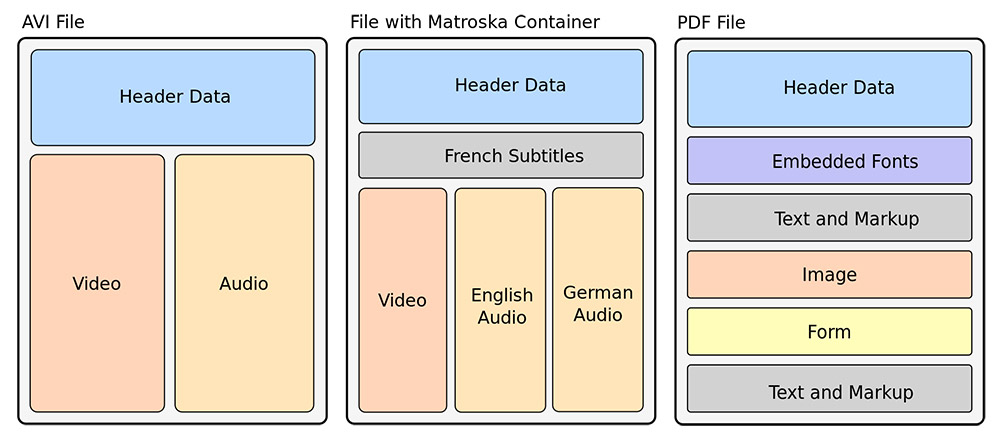Decoding Codecs and File Formats
Digital media is everywhere in our lives - from videos and music to images and documents. However, the technical jargon surrounding digital media can be confusing for many people.
Two terms that often get mixed up are Codecs and File Formats (or Containers).
We will discuss the differences between codecs and file formats and how they work together, along with some examples.
CODECS are software programs that compress and decompress digital media files.
Compression is essential because digital media files can be very large and can take up a lot of storage space. Codecs help to reduce the file size without significantly affecting the quality of the content.
When the file is played, the codec decompresses the file, so it can be played in real-time.
Examples of Codecs include:
H.264: A popular codec used for video compression. It's commonly used in MP4, AVI, and other video file formats.
H.265 or HEVC (High-Efficiency Video Coding): A video codec that offers improved compression and quality compared to H.264. It requires more processing power to encode and decode but is commonly used in streaming services, Blu-ray discs, and other high-quality video applications.
MP3: A lossy audio codec that compresses audio files while retaining most of the sound quality. It's commonly used in music streaming and downloading services.
JPEG: A lossy image codec that compresses images to reduce their file size. It's commonly used in digital photography.
Image credit: wikipedia
FILE FORMATS (or CONTAINERS), on the other hand, are containers that hold the compressed data.
They determine how the data is structured and how it can be used. File formats can contain video, audio, or both, and can be used for different purposes, such as streaming, editing, or playback.
Examples of File Formats include:
MP4: A video file format that can contain both video and audio streams. It's commonly used for streaming videos on the internet.
WAV: An uncompressed audio file format that retains all of the sound quality. It's commonly used in music production.
PNG: An uncompressed image file format that retains all of the image quality. It's commonly used in graphic design.
For example, if you want to produce a high-quality video for playback on a TV, you might choose a codec with a high bit rate, such as H.264, and a file format that is compatible with your TV.
Alternatively, if you want to share a video on the internet, you might choose a codec that compresses the video efficiently, such as VP9, and a file format that is widely supported by web browsers, such as WebM.
Codecs and file formats are both essential components of digital media.
Codecs compress and decompress digital media files, while file formats determine how the compressed data is structured and used.
Choosing the right codec and file format is crucial for digital media production, and it can affect the final product's quality and compatibility.
















